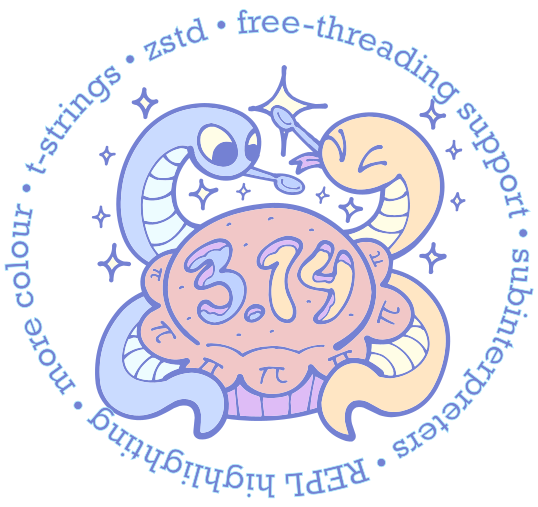This is an early developer preview of Python 3.15
www.python.org/downloads/release/python-3150a3/
Major new features of the 3.15 series, compared to 3.14
Python 3.15 is still in development. This release, 3.15.0a3, is the third of seven planned alpha releases.
Alpha releases are intended to make it easier to test the current state of new features and bug fixes and to test the release process.
During the alpha phase, features may be added up until the start of the beta phase (2026-05-05) and, if necessary, may be modified or deleted up until the release candidate phase (2026-07-28). Please keep in mind that this is a preview release and its use is not recommended for production environments.
Many new features for Python 3.15 are still being planned and written. Among the new major new features and changes so far:
- PEP 799: A new high-frequency, low-overhead, statistical sampling profiler and dedicated profiling package
- PEP 686: Python now uses UTF-8 as the default encoding
- PEP
782: A new
PyBytesWriterC API to create a Python bytes object - Improved error messages
- (Hey, fellow core developer, if a feature you find important is missing from this list, let Hugo know.)
The next pre-release of Python 3.15 will be 3.15.0a4, currently scheduled for 2026-01-13.
More resources
- Online documentation
- PEP 790, 3.15 release schedule
- Report bugs at https://github.com/python/cpython/issues
- Help fund Python directly (or via GitHub Sponsors) and support the Python community
And now for something completely different
Instantly the captain ran forward, and in a loud voice commanded his crew to desist from hoisting the cutting-tackles, and at once cast loose the cables and chains confining the whales to the ship.
“What now?” said the Guernsey-man, when the Captain had returned to them.
“Why, let me see; yes, you may as well tell him now that—that—in fact, tell him I’ve diddled him, and (aside to himself) perhaps somebody else.”
Enjoy the new release
Thanks to all of the many volunteers who help make Python Development and these releases possible! Please consider supporting our efforts by volunteering yourself or through organisation contributions to the Python Software Foundation.
Regards from an even deeper darker Helsinki,
Your release team,
Hugo van Kemenade
Ned Deily
Steve Dower
Łukasz Langa

